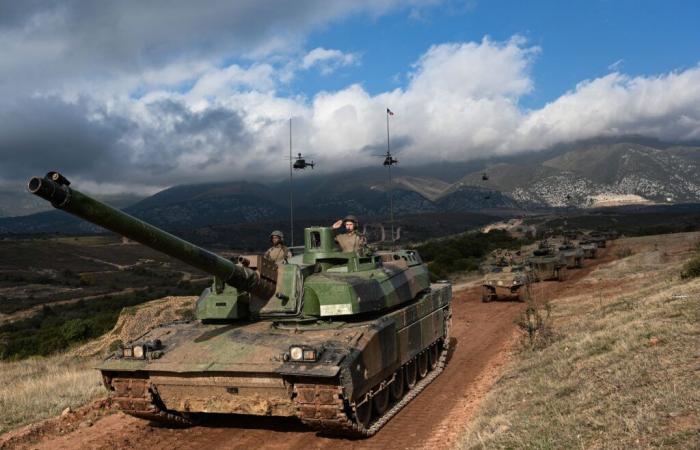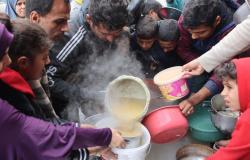
kyiv, the election of the new tenant of the White House was closely scrutinized. It must be said that with 100 billion euros in aid in military equipment transferred since the start of the conflict, the Americans are the main contributors of support to Ukraine. Thus, the election of Donald Trump and his intentions on the international level plunge Volodymyr Zelensky into the unknown, but NATO is also holding its breath after the Republican candidate's numerous criticisms of the Alliance.
Since November 5, a question remains: will the United States remain loyal to its allies? Sweden began sending out some five million brochures to its residents on November 18, encouraging them to prepare for the possibility of war. Neighboring Finland has, for its part, launched a website with similar preparation advice. In France, the American unknown raises a question: could the army hold up in a high-intensity conflict if our borders were threatened?
“Without a doubt”affirmed General Pierre Schill, Chief of Staff of the Army, in a recent interview with JDD. An assertion that the historian Michel Goya tempers: “It depends on what we call high intensity. » According to the former Marine officer, France has the technical means to lead a fight of this type. “It has the men, the capabilities, the skills, all the equipment, from contact armament to artillery support”he specifies while putting his finger on a weak point: “volume and duration”.
French ammunition stocks have been increasing since the Ukrainian conflict
In 2024, the army has a ground force of 77,000 soldiers, but only 15,000 of them could be deployed fully equipped. That's the equivalent of two brigades. In comparison with Ukraine, France could hold a front line of “80 kilometers”, but for how long? Michel Goya affirms, “to hold out over the long term, we must be able to renew the workforce, have ammunition, etc. »
Long fragile, French stocks of munitions have been increasing since the Ukrainian conflict, but this strategic choice is made at the expense in particular of combat vehicles. In this area, Paris no longer produces tracked tanks, preferring wheeled vehicles. A decision disconnected from the reality on the ground in Ukraine? “In Europe, in the perspective of a high-intensity conflict, these vehicles are less heavy, less effective in muddy terrain and they carry less weaponry than tanks”note Michel Goya.
The rest after this ad
Limited technological superiority
In the air, Paris has around 250 combat aircraft, including 138 Rafales. In comparison, Russia has more than 1,100 fighters, but for Xavier Tytelman, digital editor-in-chief of Air & Cosmos magazine, “mass is not everything”. According to him, Russian planes are equipped with shorter-range radars and are less discreet while “their missiles are often limited to 40 kilometers less range”he explains.
Also, the Rafale can handle varied missions while other nations need several types of aircraft for specific actions. “A versatility that pushed eight countries to choose the Rafale”underlines Tytelman, affirming that the aircraft produced by Dassault aviation could shoot down up to four Russian Sukhoi Su-35s. However, against Russia “we probably wouldn't have enough missiles to destroy their entire defense system”he admits. Finally, the Rafale production line is today capable of manufacturing 36 aircraft per year, which are not only intended for France, while Moscow produces around forty for itself.
In the maritime domain, the French Navy is “one of the most efficient and trained in Europe”estimates Patrick Chevallereau, associate researcher at the Institute of International and Strategic Relations. Its fleet includes an aircraft carrier, three amphibious helicopter carriers and a few frigates. Sufficient in the event of disengagement of the United States and while Paris has the second largest maritime space in the world? “The format is not suitable. We have fifteen first-rate frigates, some of which are insufficiently armed. Eighteen would be a minimum for the missions we must accomplish up to the Indo-Pacific”he concedes.
Deterrence, the ultimate defense
The Navy has ten submersibles. By 2030, six of them will be among the most modern with Barracuda-type nuclear attack submarines (SNA). “They offer great discretion, a significant weapons carrying capacity and efficient combat systems”explains Patrick Chevallereau. But France mainly relies on four nuclear ballistic missile submarines (SSBNs). Hidden at the bottom of the oceans, all year round, they are equipped with sixteen missiles, each carrying several nuclear warheads. Despite a significant cost, they are considered the life insurance of the nation, because they deter any adversary from threatening France's vital interests.
France is among the five largest nuclear powers with 290 warheads, divided between the air and maritime components. Compared to Russia's 6,000, the strike force seems minimal. But, for Héloïse Fayet, researcher at the French Institute of International Relations, this difference is accepted: “Our arsenals are calibrated according to our needs and potential adversaries. We are in a logic of “strict sufficiency”. » Although France has a “sample” army, with limited capabilities in all areas, it remains above all a nuclear power. This has so far protected it from external attacks.





